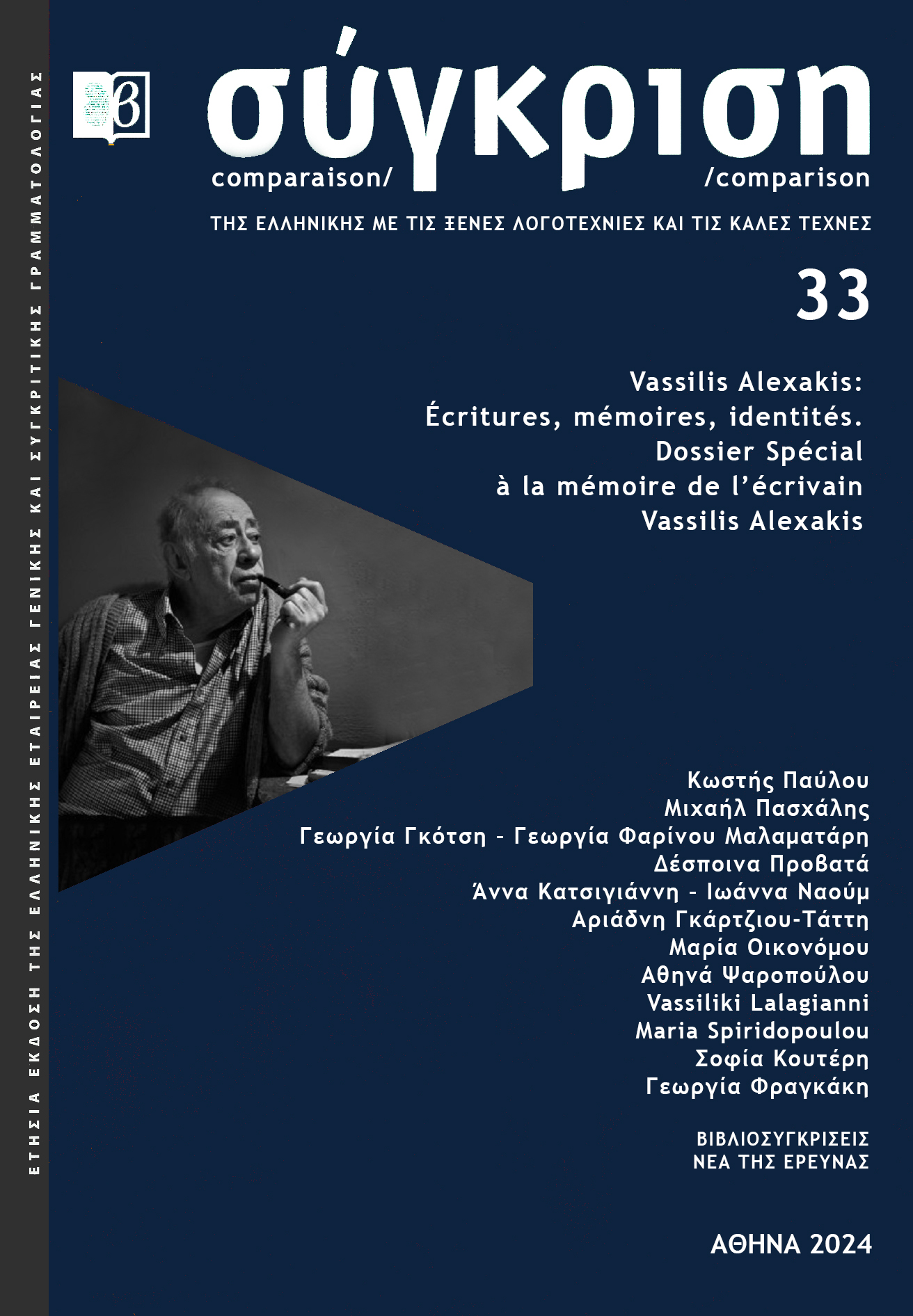Το πρότυπο του επεισοδίου του Χαρίδημου (Ερωτόκριτος B 591-744): Ariosto ή Tasso;
Abstract
The model of the Charidimos episode (Erotokritos B 591-744): Ariosto or Tasso;
It is well known that Vitsentzos Kornaros based the story of Charidimos, who accidentally killed his wife during a hunting expedition (Erotokritos B 591-744) on some version of the mythical narrative of Cephalus and Procris as told by Ovid in Metamorphoses 7.796-865. As regards the circumstances of the death of Charidimos’ wife, Kornaros reworked the initial idea in such an original fashion that it differs from all versions of the same story or reconfigurations of it. The only certainty we have is that Charidimos’ decision to take part in jousts and offer the prizes he wins to the tomb of his beloved was inspired by the story of Rodomonte and Isabella in Ludovico Ariosto’s Orlando furioso, canto 29. As regards the possible association of the Charidimos episode with another modern reworking of the Cephalus and Procris narrative in Torquato Tasso’s Rinaldo 7.16-51, which was suggested by Eirini Lydaki in 2015, the most notable similarity with the Erotokritos version is the substitution of a real woman for Ovid’s “aura”. Kornaros, however, handled the third party in his story (a beautiful shepherdess) in such an original fashion that the existence of Tasso’s Ermilla, a beautiful virgin huntress and constant companion of the anonymous knight during his hunting expeditions, does not contribute in any significant way to our understanding of the Erotokritos episode.
Article Details
- How to Cite
-
Πασχάλης Μ. (2020). Το πρότυπο του επεισοδίου του Χαρίδημου (Ερωτόκριτος B 591-744): Ariosto ή Tasso;. Comparison, 28, 13–21. https://doi.org/10.12681/comparison.24520
- Issue
- Vol. 28 (2019)
- Section
- Articles

This work is licensed under a Creative Commons Attribution-NonCommercial-ShareAlike 4.0 International License.
Authors who publish with this journal agree to the following terms:
- Authors retain copyright and grant the journal right of first publication with the work simultaneously licensed under a Creative Commons Attribution Non-Commercial License that allows others to share the work with an acknowledgement of the work's authorship and initial publication in this journal.
- Authors are able to enter into separate, additional contractual arrangements for the non-exclusive distribution of the journal's published version of the work (e.g. post it to an institutional repository or publish it in a book), with an acknowledgement of its initial publication in this journal.
- Authors are permitted and encouraged to post their work online (preferably in institutional repositories or on their website) prior to and during the submission process, as it can lead to productive exchanges, as well as earlier and greater citation of published work (See The Effect of Open Access).






